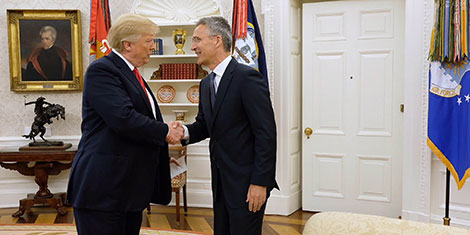
This article was originally published by War on the Rocks on 21 May 2018.
On May 17, when NATO Secretary General Jens Stoltenberg met with President Donald Trump at the White House, part of Stoltenberg’s agenda was to insulate NATO from the political winds whipping through the transatlantic relationship. It’s too early to tell if he succeeded, but it is now entirely possible that when the United States and its allies meet at the NATO Summit in Brussels in July, transatlantic relations will be at their lowest ebb since the 2003 Iraq War. Will the NATO alliance, buffeted by disputes not directly related to its mission, feel the chill of this deep freeze in transatlantic political relations, or be insulated from it?

